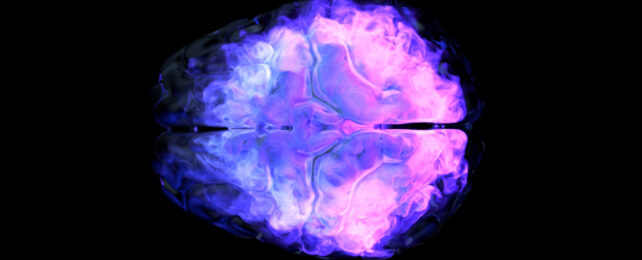Scientists from the University of Michigan in the US have detected a surge of activity in the brains of two people as they transitioned into death, with the phenomenon similar to spikes of brain activity seen previously in animals whose hearts had stopped beating.
Capturing those final, fleeting moments is a precious thing, and one so rare that we have little idea what goes on in the brain as it fades into silence.
Only last year did scientists record for the first time, in gripping detail, the brain waves of a dying person. Under tragic circumstances, they happened to record a spike in one particular type of brain activity, called gamma waves, along with changes at other frequencies.
This new study reports a similar burst of ephemeral gamma activity, in two of four patients withdrawn from life support.
Since 2013, neurologist Jimo Borjigin and colleagues have been looking for parallels in the dying human brain to what they found in rats after an induced cardiac arrest. They reasoned that the brief flares of brain activity they saw soaring far above levels of the animals' waking state may be the biological flickers of near-death experiences reported by many cardiac arrest survivors.
"These findings prompted us to investigate the neural activity of the brain in the dying patients before and after clinical withdrawal of ventilatory support," Borjigin and colleagues write in their new paper.
The team reviewed cases from Michigan Medicine, the University of Michigan's academic medical center, of patients who died in the neuro-intensive care unit since 2014.
In two of the four comatose patients they identified, who passed away while doctors were still monitoring their condition after a cardiac arrest or brain hemorrhage, electroencephalographic (EEG) recordings revealed a sharp burst of gamma waves in one part of the brain that dispersed into long-range connections across both hemispheres.
This wasn't the after-effects of a seizure, a seizure specialist confirmed, leading the research team to believe they might have chanced upon a possible marker of consciousness, the sense of awareness of our surroundings that rises out of the tangled mess of brain cells in our heads.

The initial surge of gamma waves was located in an area of the brain considered a 'hot zone' for so-called neural correlates of consciousness. A similar pattern of activity has been observed in people dreaming, and in seizure patients who report having visual hallucinations and out-of-body experiences.
A recent review describes how this 'hot zone' of potential consciousness includes sensory areas of the brain, which might explain why near-death experiences that people report are so vivid. Cross-hemisphere communication in the brain is also thought to be important for memory recall.
However, the same review acknowledges the enduring problems in trying to pin consciousness down, pointing out that some potential markers of consciousness have "proved illusory." Scientists have come close, but let's be real: no one is really sure.
"Although the marked activation of the posterior hot zone in the dying brain is suggestive of elevated conscious processing in these patients, it does not demonstrate it," the researchers note.
None of the patients survived to recount what they might have seen, felt or experienced on the brink of death, and even then, relating sparks of brain activity to a person's subjective experience leaves plenty of room for ambiguity.
Not everyone is convinced out-of-body experiences are connected to some transitory brush with death itself, either, rather they could be a neurological response to the stress of cardiac events, which starves the brain of oxygen.
Only two out of the four patients displayed a gamma surge, in the nearly 10 years of cases the team reviewed, and this was accompanied by widespread hypoxia (a lack of oxygen) across the brain.
Other studies shadowing people on their deathward journey have been similarly hit and miss, detecting seemingly significant changes in brain waves in only some patients.
"We cannot rule out the possibility that the surge of gamma power is a sign of a pathological process unique to the dying stage and unrelated to conscious processing," Borjigin and colleagues write.
That said, they are hopeful – as we all are – that with each case recorded, we might learn a fraction more about the last moments of life and consciousness.
"This study lays the foundation for further investigation of covert consciousness during cardiac arrest, which may serve as a model system to explore mechanisms of human consciousness," the researchers conclude.
The study has been published in PNAS.
